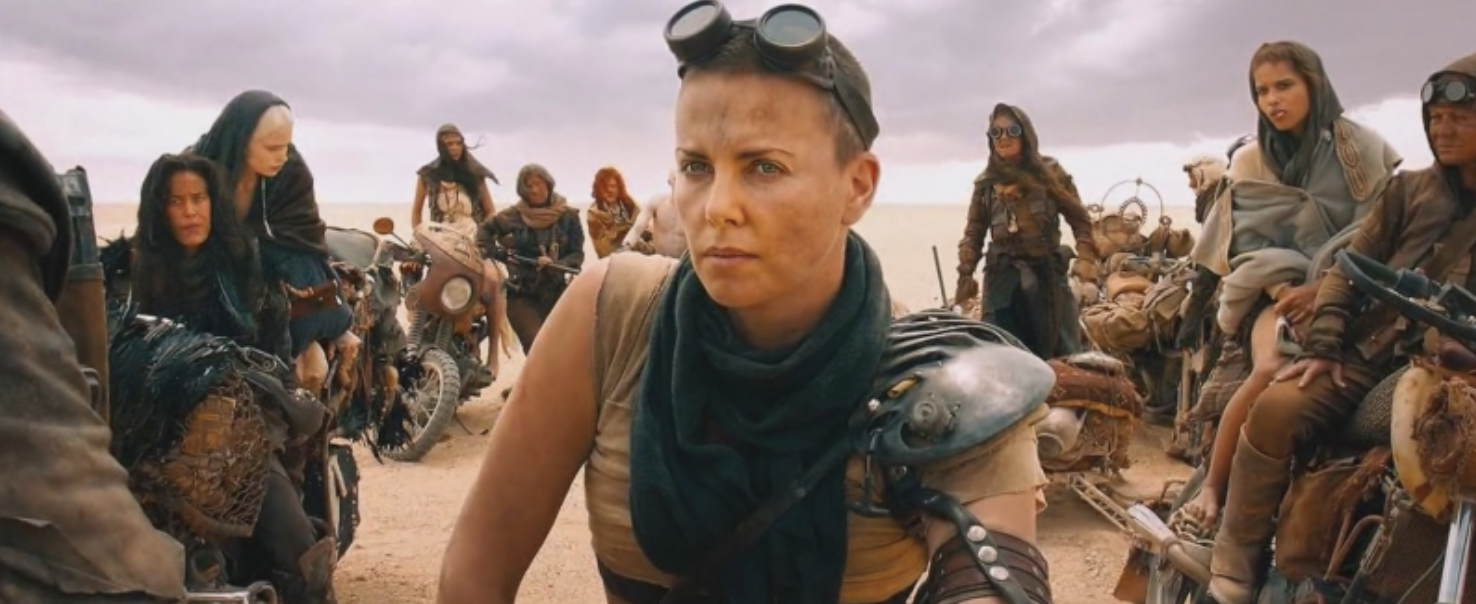“Who killed the world?”
This question is splattered across the walls, carved into the floors, etched in dirt, and spoken aloud multiple times throughout George Miller’s Mad Max: Fury Road. In the middle of a post-apocalyptic wasteland, ravaged by nuclear war and disappearing resources, it’s pretty clear who’s to blame. Humanity tends to collapse in on itself sometimes.
It’s a question that seems apt for our current reality, too. “Killed” might seem harsh, but in a way, the world as we once knew it two months ago is dead. As our realities moved indoors, when those on the frontlines began to face unprecedented horrors, anything that had the promise of certainty vanished. Hyperbole says things took a turn for the apocalyptic; what’s more apocalyptic than ruminating on the way things used to be?
Today is the five year anniversary of Mad Max: Fury Road. At the time of its release, critics and the industry embraced the film with a fervor that made up for the general public’s lack of interest. It was nominated for ten Academy Awards including Best Picture; it won six, sweeping most of the technical categories, and winning for costume design and makeup and hairstyling. It should have won Best Picture (Spotlight took it instead). But five years later, in the middle of weird and uncertain times, Mad Max: Fury Road resonates even more than it did before.
In a desert wasteland, history informs the way we build ourselves back up. Low on resources, sections of the Wasteland are divided up between men who control the essentials of survival — GasTown for fuel, the Bullet Farm for machinery and weapons, and The Citadel for the most coveted essentials: water and greenery. From there, a society is built, trades and deals made between each section. But it’s a tenuous infrastructure, benefiting those at the top and in control. Because he controls the water, the lifeblood of the natural world, and therefore, of hope, Immorten Joe sits at the top of this facsimile of a world, where the weak are left to dry out and rely on the graciousness of an evil man. And so history repeats itself.
“There’s a new world coming,” Miss Giddy, a History Woman, says to Immorten Joe in a deleted scene. “She’s already on her way.” Covered in tattoos that represent a record of human history, Miss Giddy taught the five wives of Immorten Joe — Toast the Knowing, The Splendid Angharad, Capable, The Dag, and Cheedo the Fragile — all she knew of the world. Despite being held in a vault, the wives’ living quarters show an affinity for learning, a classroom set up neatly in the front part of their prison. Out on Fury Road, as the five and Furiosa race for freedom, they each latch on to a speciality, born out of a thirst for knowledge as well as circumstance. Each of those specialities — Toast organizing the weaponry, The Dag and her seeds, Capable’s compassion, Angharad’s hope, and Cheedo’s willingness to help — all work as part of a collective to build something stronger. When they meet the Vulvalini, knowledge gets passed on to a new generation through conversation and storytelling. “Thought somehow you girls were above all that,” The Dag says to the Keeper of the Seeds, upon learning how many people The Vulvalini have killed. The Keeper of the Seeds replies: “Back then, there was no need to snap anybody.” Cheedo tells us Angharad’s philosophy on bullets, calling them the anti-seed — plant one and watch something die. Even in the midst of battle, though, the Keeper of the Seeds clings onto the promise of growth, bringing The Dag along with her.
For Max and Furiosa, haunted by personal pasts, a chance for redemption seems within their grasps the more they run — Furiosa toward the elusive Green Place, a memory of a time when things were simple; Max, toward another day of survival. “Hope is a mistake,” he tells Furiosa. “If you can’t fix what’s broken, you’ll go insane.” Just two scenes later, he suggests the only way forward is to turn back.
It seems an odd decision, especially for the group of women who just escaped captivity and oppression, but turning back doesn’t mean returning to the old ways. As Max, Furiosa, Nux, the Wives, and The Vulvalini fight their way back to the Citadel, a Green Place all along, a new generation takes the lead into a brave new world. “It’ll be a hard day,” Max tells the group right before their return. It’ll keep being hard days. Change doesn’t happen in one day, but in all of them. It’s only possible in the place that needs changing in the first place. Nux, at first brainwashed into Immorten Joe’s ideology of sacrifice and martyrdom, expresses one last “witness me” as he crashes the War Rig, taking Riktus with him. He points to Capable, and in doing so, he points to us to witness the possibilities of change, in thought and in ideas. When it comes time for the women to reach the very top of The Citadel, they bring their knowledge and their history; most importantly, they invite the weak and the poor to rise up along with them.
Advertisement
Five years ago, Fury Road gave the universe of Mad Max a feminist narrative. In 2020, with the world facing a pandemic, its own version of the Wasteland, it reads more like a humanistic approach for how to survive — together.
Advertisement
